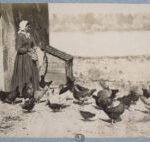In the world of Magic: The Gathering (MTG), the health of the game isn’t just measured by set releases or tournament attendance, but also by the intricate flow of its card economy. Many players might overlook this aspect, focusing more on deck construction and gameplay. However, the availability and accessibility of cards across different formats are crucial for the longevity and vibrancy of MTG. A key format that significantly impacts this economy and player progression is Pioneer.
The MTG Economy: A Format Funnel
Think of the MTG card economy as a carefully structured flow. Cards enter the ecosystem primarily through Limited formats and pack openings. Ideally, these cards should find homes and maintain value as players progress through different formats. This progression typically looks like this:
Limited → Standard → Pioneer → Commander/Modern → Legacy, etc.
This pathway represents not only a card’s lifecycle but also a player’s journey. New cards from sets are initially explored in Limited and then find their footing in Standard. From there, to maintain their usability and value beyond Standard rotation, formats like Pioneer become essential. Simultaneously, formats like Commander (EDH) and Modern also absorb cards, extending their lifespan and contributing to a healthy market. Even formats like Legacy and Vintage, while more niche, play a role in this overall system.
The Modern Bottleneck: A Format Too Far
Before Pioneer emerged, there was a noticeable gap in this format progression. Modern, while a popular and robust format, presented a significant leap for players transitioning from Standard. The cost of entry and the complexity of Modern card pools could be daunting. This created a bottleneck:
Standard → EDH → Modern (Bottleneck)
This pathway was problematic. It was a large jump for players, both in terms of budget and format knowledge, to move directly from Standard to Modern. Many players, after rotating out of Standard, might find themselves drifting towards Commander, which, while accessible, didn’t fully address the need for a competitive constructed format that utilized a broader card pool than Standard, but was less demanding than Modern.
Pioneer MTG: The Ideal Intermediate Home
Pioneer was introduced to directly address this bottleneck. It serves as an “in-between” format, a crucial stepping stone for both cards and players. Pioneer provides a competitive constructed format that utilizes cards from Return to Ravnica forward, creating a large and diverse card pool that is more accessible than Modern.
Standard → EDH → Pioneer → Modern
This revised path offers a smoother transition. Pioneer allows players to utilize their rotating Standard staples in a new and engaging format. It softens the transition to higher-priced cards and more complex formats like Modern, acting as a crucial on-ramp to the broader world of non-rotating formats. Pioneer successfully bridges the gap, ensuring a more fluid and less intimidating progression for players.
EDH and Pioneer: Driving the Current Market
Interestingly, Commander and Pioneer have become significant drivers of the MTG market currently, arguably more so than Modern or Legacy. Commander’s popularity is undeniable, its social and accessible nature making it a format that consumes a vast number of cards from across Magic’s history. Pioneer, with its focus on recent sets and competitive play, also fuels demand for a wide range of cards. Together, these formats are vital in maintaining card value and market activity.
The Reprint Question and Future Formats
Ideally, frequent and comprehensive reprints would alleviate pressure on card prices and format accessibility. However, from a business perspective, Wizards of the Coast faces a dilemma. Reprinting everything to oblivion, while beneficial for players in terms of accessibility, could undermine the perceived value of cards and potentially impact long-term profitability. The tension between card value and accessibility is a constant balancing act.
Looking ahead, if Magic: The Gathering continues to expand for another decade or two, the need for new formats might arise again. Perhaps a format to bridge the gap between Pioneer and Standard, or even Pioneer and Modern, could become necessary. For now, Pioneer stands as a testament to the importance of format diversity and its crucial role in maintaining a healthy and engaging Magic: The Gathering ecosystem.


